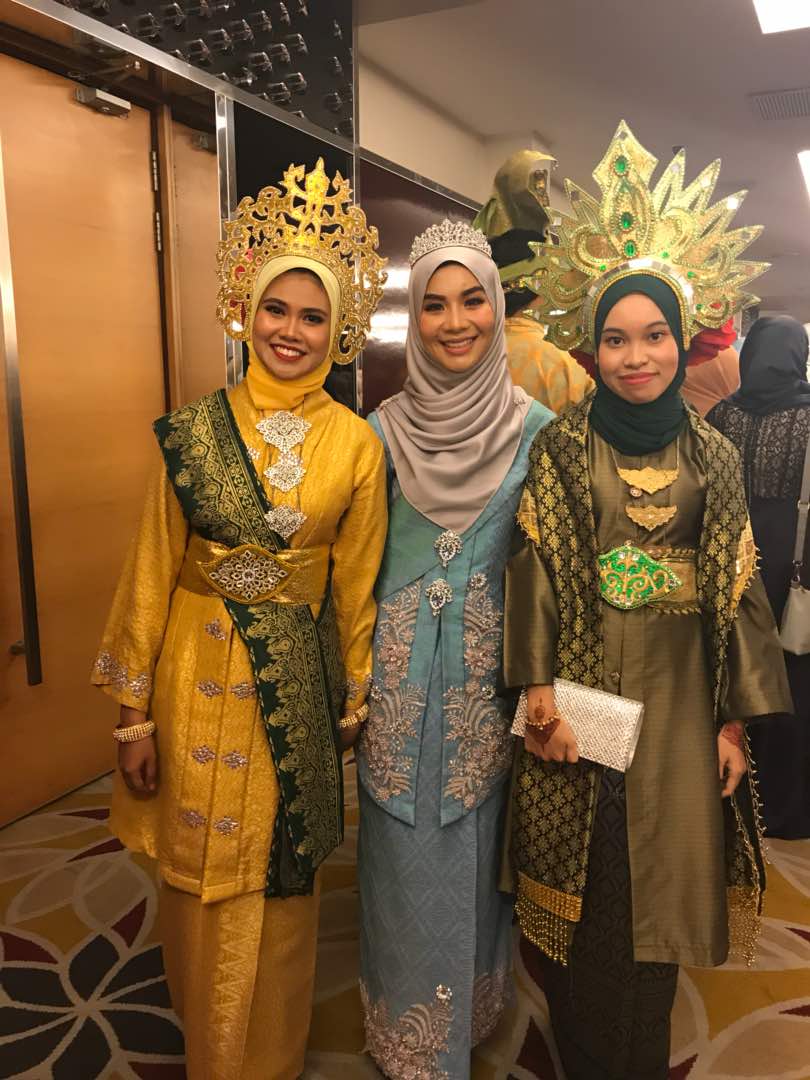Whispers of Silk and Royalty: Exploring Traditional Malay Attire of the Melaka Sultanate
Imagine a time of bustling port cities, fragrant spice trades, and the rise of a powerful maritime empire. Within this vibrant tapestry of 15th-century Melaka, a unique sartorial language flourished, woven into the very fabric of the Malay Sultanate. The traditional attire of this era speaks volumes, not merely of fashion, but of history, social structures, and the enduring spirit of a people.
The clothing traditions of the Melaka Sultanate were far more than simple garments; they were a reflection of the Sultanate's cosmopolitan nature, absorbing influences from India, China, the Middle East, and beyond. These diverse threads were interwoven with indigenous Malay aesthetics, resulting in a distinctive style that marked the era’s cultural zenith. From the shimmering silks of the royal court to the practical cotton garments of the common people, each piece played a role in the social narrative.
Understanding the historical context of Melaka Sultanate clothing allows us to appreciate its intricate details. The Sultanate, a powerful force in the region, fostered trade and cultural exchange, which profoundly impacted its clothing traditions. The adoption of Islam in the 15th century further shaped these traditions, introducing elements of modesty and Islamic aesthetics into the existing clothing styles.
The significance of traditional Malay attire of the Melaka Sultanate lies in its representation of a rich cultural heritage. It symbolizes the artistry, craftsmanship, and social values of the era. These garments weren't just coverings; they were imbued with meaning, reflecting social standing, religious beliefs, and cultural identity. Preserving these traditions today serves as a vital link to our past, fostering a deeper understanding of our cultural roots and historical legacy.
One of the main issues surrounding the traditional attire of the Melaka Sultanate today is the challenge of preservation. As modern fashion trends evolve, there's a risk of these historical garments fading into obscurity. Efforts to document, conserve, and promote awareness of these traditional clothing styles are crucial to ensuring that this rich cultural heritage endures for generations to come. This involves scholarly research, museum exhibitions, and educational initiatives that highlight the beauty and significance of this historical attire.
The baju kurung, a loose-fitting tunic and skirt combination, exemplifies the influence of Islam on Malay attire. The baju melayu, a traditional men's outfit, also reflects this modesty, often paired with a songkok, a traditional headwear. The intricate textiles and embellishments used in these garments showcase the artistry of the era, with techniques like songket weaving and batik dyeing adding layers of cultural meaning and aesthetic beauty.
Preserving these traditions offers several benefits. Firstly, it strengthens cultural identity, providing a tangible connection to the past. Secondly, it promotes cultural tourism, attracting visitors interested in exploring the rich heritage of the Melaka Sultanate. Thirdly, it supports local artisans and craftspeople, ensuring the continuation of traditional skills and techniques like songket weaving and batik making.
Advantages and Disadvantages of Maintaining Traditional Attire
| Advantages | Disadvantages |
|---|---|
| Preserves cultural heritage | Can be perceived as impractical for daily wear in modern contexts |
| Supports local artisans | May require specialized skills and materials for creation and maintenance |
| Promotes cultural tourism | Can be expensive to acquire authentic pieces |
Challenges in preserving these traditions include the increasing cost of materials and the declining number of skilled artisans. Solutions involve government initiatives to support artisan training programs and provide financial assistance for the production of traditional garments. Educational workshops and public awareness campaigns can also promote appreciation and demand for these exquisite pieces.
Frequently asked questions include: What are the key elements of Melaka Sultanate attire? Where can I see examples of these garments? How are these traditions being preserved? What is the cultural significance of these clothing styles? What are the different types of traditional Malay clothing? What materials were commonly used? How has traditional attire evolved over time? How can I support the preservation of these traditions?
One tip for appreciating Melaka Sultanate attire is to visit museums and cultural centers that showcase these garments. You can also explore online resources and books that delve into the history and significance of traditional Malay clothing. Attending cultural performances can provide a dynamic and engaging way to experience these traditions firsthand.
In conclusion, the traditional attire of the Melaka Sultanate represents a powerful testament to the region's rich cultural heritage. These garments embody not only the artistry and craftsmanship of a bygone era but also the social, religious, and political influences that shaped the Sultanate's identity. By understanding the history, symbolism, and challenges surrounding the preservation of these traditions, we gain a deeper appreciation for the enduring legacy of the Melaka Sultanate. It is our collective responsibility to support initiatives that preserve these cultural treasures, ensuring that the whispers of silk and royalty continue to resonate through the generations. Let us embrace and celebrate this vibrant heritage, not as relics of the past, but as living threads connecting us to our history and inspiring our future.
Decoding optumrx your pharmacy benefit manager
Navigating grief with compassion funeral homes in hillsborough
Discover the joy of joe macdiarmids jig a scottish country dance delight













